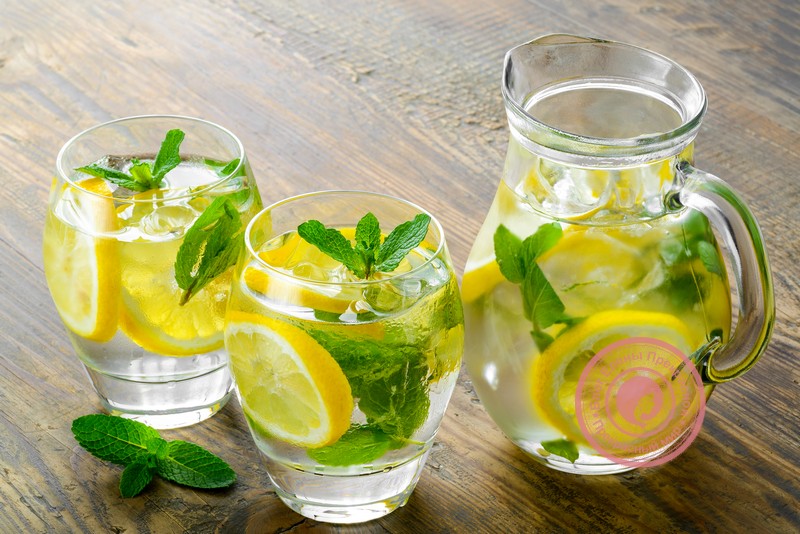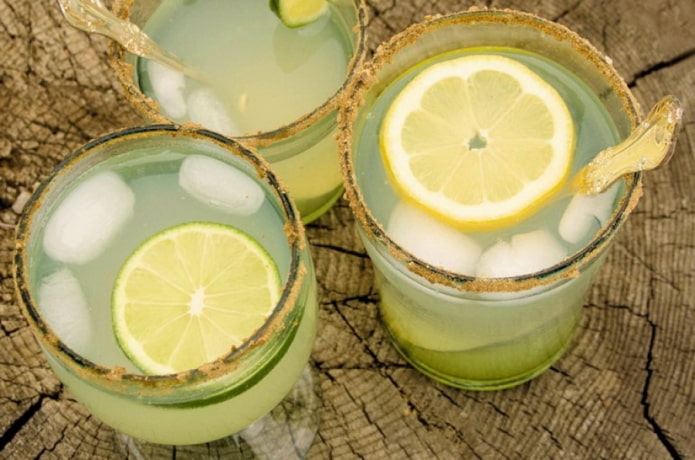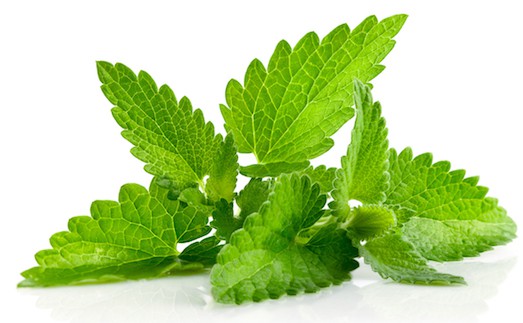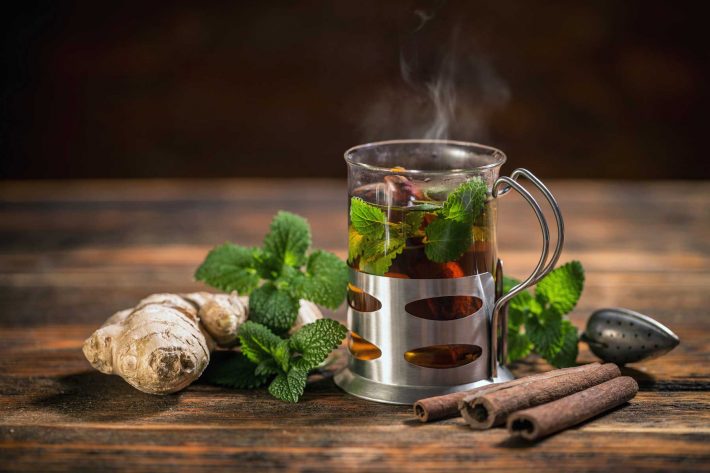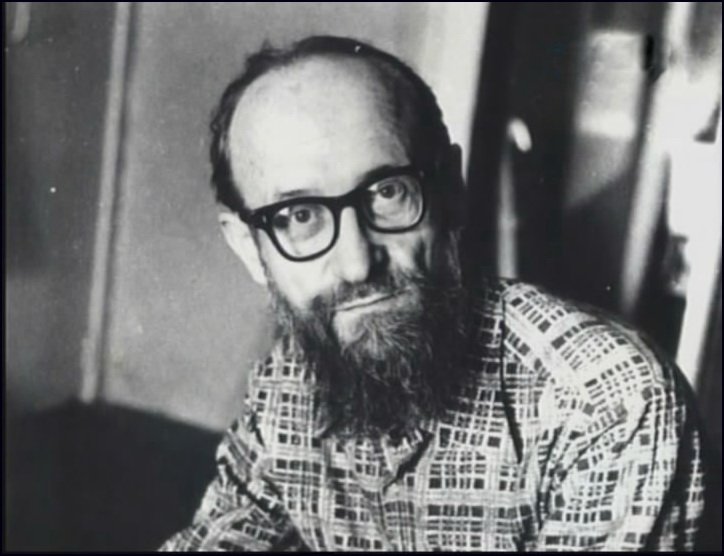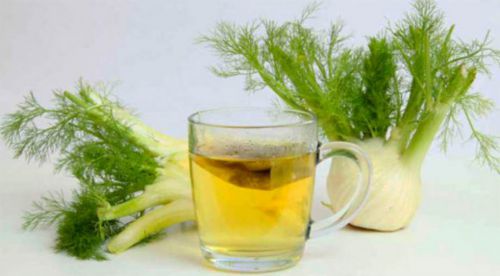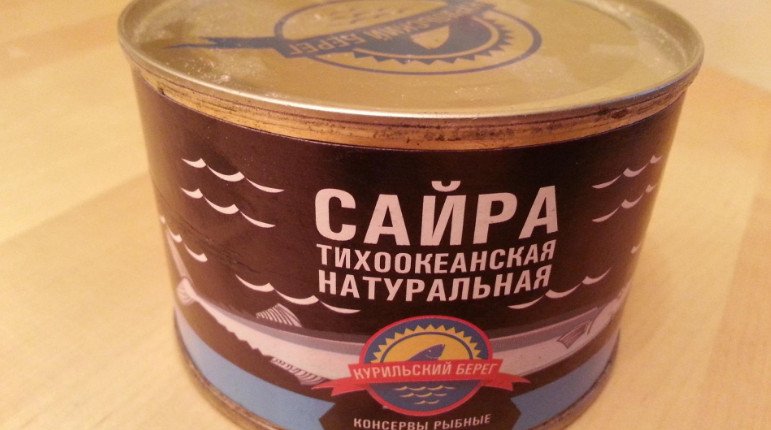An excursion into history - who invented Russian vodka? Who created the vodka. History of appearance in Russia
Many ordinary people who are ready without hesitation to answer the question of how vodka appeared in Russia are mistaken. The history of this drink is saturated with a considerable number of myths and causes heated discussions around the world.
History of occurrence
Pure alcohol was invented by the Arabs at the turn of the 7th-8th centuries. Later, products obtained by distillation of alcohol-containing raw materials, they began to be used for medical purposes and used in chemical experiments.
The famous Persian doctor Avicenna in the XI century actively used distillation to obtain essential oils.
One version says that at this time, thanks to the experiments of the Persian alchemist Ar-Razi, the first prototype of vodka appeared. But there is no historical evidence. This is probably due to the prohibition by the Muslim religion of alcohol.
The first documented evidence of distillation of alcohol belongs to the Italian medical school of Salerno of the XII century. The found treatises describe the production process by fermenting fermented fruit raw materials and record consumption as a strong alcoholic drink.
Presumably with Catholic monks, technology reached Poland by the fourteenth century.
It is doubtful that the Arabs invented vodka, because the alcohol-containing raw materials were distilled for purposes not related to direct consumption as alcohol. The theory of European origin is also not unambiguous - in fact, the technology allowed the production of moonshine, and not vodka in the modern sense.
What does Mendeleev have to do with the invention?

The basis for the myth of the great scientist's involvement in the creation of the drink is his work "On the Connection of Alcohol with Water." But in fact, in the dissertation there is no information about the development of biochemical or physiological properties of water-alcohol solutions of different concentrations.
Or in simple words, Mendeleev did not study either the production of alcohol or its consumption. A well-known work is devoted to solubility and volume change while maintaining mass.
With many theories, researchers agree that Mendeleev did not invent vodka.
Appearance in Russia

Vodka appeared on the territory of Russia in the second half of the XIV century, when merchants from the Roman Empire brought prince Dmitry Donskoy for a test of strong alcohol, called “Aqua vitae” - “Living Water”.
In fact, the drink was a distilled alcohol from fruit or grape fruits. The princes did not appreciate the novelty, and for a long time in Russia they did not even remember about it.
In 1429, the drink was brought back as a medicine for Prince Vasily. Thanks to the wanderer monks from Europe, the recipe soon appeared in the state. However, as a basis, they began to take raw materials, which were abundant in local open spaces - wheat, rye and barley.
The production of alcohol from grain has rapidly spread throughout the state.
It is not known exactly who first made vodka from distilled grain alcohol. A popular legend is that the recipe belongs to the monk of the Miracle Monastery of the Moscow Kremlin named Isidore.
The advent of modern vodka

While there were no special devices, the fortress was measured, setting fire to it. If half burned, the drink was called "half-burn." A degree of approximately 38% since the beginning of the 19th century has become the standard for the product, in 1843 the norm was approved by documents.
With the use of alcohol meters, the ministry decided to round the figure to 40 in order to simplify the calculation of production volumes and taxation. In 1886, the norm was fixed
Modern vodka is made not by distillation, but by diluting with water pure rectified ethyl alcohol. The rectification method appeared in the 19th century in connection with the need for developing industrial sectors in large volumes of alcohol.
New technology has allowed to obtain a liquid with a strength of 96% with the highest level of purity on a large scale. Toward the end of the century, small batches of “table wine”, the prototype of today's vodka, began to be produced at Russian factories.
By the end of the 19th century, the government of the Russian Empire monopolized the sale of strong alcohol. They set a goal to produce exclusively “pure wine” - a solution of ethyl alcohol and water without natural impurities. It was organized by a technician who invented the recipe for making modern vodka. Since then, it has not changed much.
In 1894, the Russian government registered a patent for the sale of a product under the name "Moscow Special", in which 40 parts of the weight of ethyl are subjected to carbon filtration.
In 1936, the state standard was approved, which established the name “vodka” for a pure water-alcohol solution.
Unusual types of vodka

In many countries, they have made changes in the formulation of the product, trying to achieve higher quality and taste of the drink.
Thus, different varieties of vodka, characteristic for a particular country, appeared:
- Wormwood - from France, Czech Republic, Spain.
- Rice - from Thailand, Southeast Asia.
- Grape - from Cyprus and Italy.
- Bamboo - from Indonesia.
- Apricot - from Hungary and Croatia.
- Juniper - from England and Ireland.
- Kumysnaya - from Buryatia and Kalmykia.
- Hemp - from the Czech Republic.
- Raisin - from Israel.
- Cactus - from Mexico.

- To combat the widespread passion for alcohol, Peter I invented the medal "for drunkenness." An alcoholic who got into the police was put on an “award” weighing 8 kg and secured so that it could not be removed. The punished went for several days with a medal on which was the saying “for drunkenness”.
- When a test of alcohol by annealing showed insufficient strength, it was called "under-burn." From here the name of a smell from a mouth after a booze "fume" also went.
- During the war, the soldiers of the Red Army were given a “People’s” serving of alcohol every day - 100 grams. Since 1942, the rules began to be revised.
- The Scots set vodka records. They own the most expensive vodka - Diva, worth up to $ 1 million per bottle, and the strongest - Pincer Shanghai Strength, over 88%.
- In Russia there are several museums dedicated to the drink. And in 2008, the Museum of Vodka was opened in the center of Amsterdam.
Russian vodka is presented today in any more or less decent store anywhere in Russia with at least 20-30 kinds. The drink is a mixture of alcohol obtained on a distillation column, and purified prepared water. But the drink called "vodka" has been known since 1386 (six years after the memorable Battle of Kulikovo), and the distillation column was invented by the French already in the 19th century.
So when did vodka appear in Russia, what was it like and what are we buying in the store now?
What our ancestors drank from ancient times
The process of sublimation was not always. But known from the time of writing. The tribes living in the vastness of South America and Africa, in order to cheer themselves up, ate the sweet fruits of some plants that began to roam.
It's all about microscopic fungi - yeast. In simple terms, these microorganisms feed on sugar, and produce ethyl alcohol C 2 H 5 (OH). Wild yeast lives on the skin of many types of berries and fruits. And when vodka appeared in Russia, the fermentation process was well known.
The Slavs used fermentation products without distillation, in its purest form. There was also no sugar in those days, so honey or sweet fruits were food for yeast. Today, however, not everyone knows the recipe for how to cook real drinking honey, how to ferment kvass.
Also in Russia, mainly in the agrarian regions, many drinks were made on the basis of grain malt - barley, rye. These are the same kvass. In addition, beer was brewed from germinated grain. Malt from millet was also used, on the basis of which they prepared a drink adopted from the Tatars - buzu.
Who invented to distill
The one who invented vodka in Russia did not make a revolution in the history of alcoholic beverages. The earliest mentions of the distillation process discovered by historians date back to the first century A.D. e. It was used, if you believe the hieroglyphs, not for drinking. Ancient Greek alchemists tried using it to boil gold, create philosophical stones.
Distillation was developed in the Ancient East in the XI-XII centuries. The East was famous for the achievements of medicine, the distillation product was used by aesculapius for the preparation of potions and medicines (alcohol dissolves various active substances much more effectively than water, with it you can prepare much more effective extracts from plants). That is, alcohol has already begun to be consumed, however, so far only for medicinal purposes.
Europe, cognac and perfumery
Around the middle of the 12th century, distillation became widespread in Europe. At first, distillation was used, like that of the Arabs, for the preparation of medicines and in chemical experiments. But the French would not be themselves if they did not give the distillate another use - the production of cosmetics. When vodka appeared in Russia, Europe already used alcohol with might and main, including for drinking inside.
An interesting story is the emergence of cognac - one of the most elite drinks of our time. Historians say that, strangely enough, the crisis was to blame.
The overproduction of wine in one of the French cities has led to the fact that huge stocks of this drink have accumulated in warehouses. The wine was sour, spoiled and promised the owner big losses. And then it was decided to distill it all into grape spirit.
Then another crisis, thanks to which grape spirit, which had not been in demand for a long time, lay forgotten in oak barrels for several years.

The liquid subsequently recovered from the barrels was striking in its properties. In addition to the unusual taste and aroma, it, unlike wines, could be stored for an arbitrarily long time and transported at any distance.
Who taught to "drive" Russian
It is not known exactly in which year vodka appeared in Russia, but chronicles have been preserved that for the first time the product of distillation, namely grape spirit, was donated to Dmitry Donskoy by Genoese merchants. The further fate of the gift is unknown, in any case, the drink did not receive distribution this time.

Repeatedly merchants brought to Russia already a large shipment of alcohol, this was during the reign of Basil II of the Dark in 1429. It is curious that the second time, when vodka appeared in Russia, it did not cause the enthusiasm of the ruling class. Moreover, the drink was found to be harmful and banned for import into the Moscow Principality.
When did vodka become a Russian drink
The development of the production and use of vodka in Moscow lands is usually associated with the name of Ivan Vasilyevich the Terrible. In what century did vodka in Russia originate from its own production? The most likely period is the end of the XV - beginning of the XVI centuries. Despite the ban, noble nobles, as well as monks in monasteries, slowly drove her to the estates.

It is known for certain that John IV ordered the establishment of the sovereign distillery, where vodka was produced and sold. Initially, institutions made a drink exclusively for the royal oprichnina and archers. However, soon, realizing the benefits of the sale of alcohol, Grozny ordered the establishment of taverns for all classes.
The domestic production of alcoholic beverages, including low-alcohol fermentation products, was strictly prohibited. And there were not many daredevils to disobey Ivan the Terrible.
What was the real “Russian vodka”?
As is already clear from the story, the history of the emergence of vodka in Russia, real vodka is the story of the emergence of refined grain moonshine, the very one that is still being driven somewhere in the villages. This drink was the original Russian vodka.
Sugar in those days was unknown, so either sweet fruits (the middle strip is not so rich in them) or malt - sprouted and dried grains could serve as “food” for the yeast, it was all right in Muscovy during the harvest years.
The grain scattered in an even layer and covered with a damp cloth. After a while, sprouts appeared, the grain acquired a sweet taste. After that, the material was dried in an oven, frayed by hands and sieved. Thus, the seeds were cleaned of sprouts and roots. This was followed by grinding in a mill.
Fermented berries were used instead of bread yeast. In general, in large enterprises, a part of the already working mash was simply taken and added to the fresh one.
They drove vodka, or "bread wine," blindly. This method of production can still be found. This is what happens when there is no moonshine still, but you really want to drink.
Russian vodka on the estates
Some Russian vodka is undeservedly considered a drink primitive, rough with low taste. But the history of the appearance of vodka in Russia is akin to the history of cognac. At first, when the distillation of grape raw materials was done in one go, they used the whole product for drinking without controlling the temperature regime. The quality of the drink was hardly better than the most nasty moonshine.
In the XVIII-XIX centuries, the Russian landlords made a completely different drink than the one that produced the terrible king’s distilleries. We note the appearance of vodka in Russia purified on charcoal, obtained on a device with a coil.
The distillation began to be done twice, and in the process itself they began to select only the middle, clean from both methyl impurities (“heads”) and heavy fusel oils (“tails”).

From generation to generation, recipes for tinctures on various herbs have been passed on. And if we take into account the fact that in those days the properties of plants were not better known than they are now (people knew when to pick herbs and how to store them), we can assume that the result was corresponding.
Ladies prepared a special "female" vodka. This drink has a lot of names: spotkach, cordial, rataphia. They made rataphia from all kinds of fruits and berries. The highest chic was to have liqueurs in the house:
- apricot;
- lingonberry,
- cherry;
- blueberry.
Russian vodka is one of the victims of the First World War

The production of vodka from grain is not cheap. At the beginning of the 19th century, a distillation column was invented in France. From any fermented raw material (sugar beets, frozen potatoes) it was possible to obtain ethanol of the highest purification. Nobody was going to use this alcohol for ingestion, they used it as a technical one.
In Russia, this equipment began to appear in the 1860s. And almost immediately, they began to use alcohol for the preparation of hard liquors, while in small batches and as an experiment.
Then the First World War broke out. On the battlefields, Russia equipped an army of many thousands. To produce vodka for the front hundred grams from then scarce bread was too wasteful, and here the distillation column served as a real salvation of the royal budget. The Bolsheviks, having taken power, did not change anything. And why, such help to the budget!
Vodka and Mendeleev
Often you hear a lot of fables where vodka came from in Russia. Many of these absurd tales are associated with the name of the great Russian scientist Dmitry Mendeleev. For example, on many resources you can find "historical" evidence that Mendeleev:
- was a drunkard;
- by order of the government, he determined that vodka should have a fortress of 40%;
- once drunk to such an extent that in a dream he appeared to his famous periodic table of elements.

Dmitry Ivanovich is really related to 40%, but this figure has nothing to do with an alcoholic beverage. With this concentration of a solution of alcohol and water, the maximum mutual penetration of molecules is achieved.
As for everything else - nothing more than fairy tales, often invented outside of Russia, like the Potemkin villages or drunken Russian dances to the accordion with wild bears.
The media, doctors, and generally people say that alcohol is harmful, it still continues to flourish in our country. Therefore, many consumers are interested in what this or that alcoholic beverage consists of, how it is made, what its history is, who invented it and so on. Today we will find out who invented vodka, its composition, what is the formula of vodka and much more.
Today it is considered a traditional Russian drink.
Today, vodka is considered to be a traditional Russian drink, and foreigners generally cannot imagine a Russian person without a glass with the aromatic contents in their hand, obeying stereotypes. But has vodka appeared and started its development in our country?
A bit of history
The name of this drink was first used in the XIV - XV centuries. Then vodka was called an infusion of roots, herbs or berries, which was prepared on the basis of a strong alcoholic drink. There is a version that the drink, whose chemical composition resembled vodka, was first invented by the healer Ar-Razion in the distant X century.
Another version says that Arabs invented vodka. In this country, religion strictly forbade the use of alcohol, as a result of which vodka was used to create perfumes, as well as for medical purposes. As you know, alcohol is an excellent antiseptic. In Europe, vodka appeared in the 13th century and was also used as a medicine.
In Russia
Until the time of Ivan the Terrible, people and even the highest ranks observed sobriety. But when Ivan the Terrible came to power, vodka was delivered to him from Europe as a gift for medical purposes. After that, the people of Russia began to consume not only low-alcohol drinks, but also vodka.
Sobriety was no longer beneficial to the authorities, so Ivan the Terrible began to instill in people the idea of \u200b\u200bdrinking hard liquor. It got to the point that people were forcibly taken to drinking establishments and forced to drink. At the same time, it was forbidden to produce alcohol at home under pain of death. Thus, the king decided to increase the treasury and raise money to conquer Siberia, which was successfully done. That is how alcohol addiction began. The people themselves did not seek to engage in the production of vodka, this was considered the last thing, and drunks were despised then, as now.

Later, in 1932, the name of this alcoholic drink was officially introduced along with the adoption of the state standard. It was then that the correct chem was registered. composition of vodka. For its manufacture, the ratified alcohol created on the basis of potatoes was used. Now they make vodka at the factory. Alcohol is mainly made from crops.
Take a short survey and get a free brochure entitled “Drinking Culture.”
What alcoholic drinks do you drink most often?
How often do you drink alcohol?
Do you have the desire to “hang out” the day after taking alcohol?
Which system do you think alcohol has the most negative effect on?
In your opinion, are the measures taken by the government sufficient to limit the sale of alcohol?
In 1936, “special vodkas” and “vodkas” appeared. In the first case, various flavors were used, and for the manufacture of the second, only alcohol and water were used. It was this year that GOST was adopted, according to which the process of production and sale of this product was clearly regulated.
Probably everyone heard about 100 grams of "front-line". This is the norm for the issuance of vodka, which was relied upon to the personnel of the Soviet army during the Second World War. Later, alcohol was given only to those who are fighting on the front lines.
Guilty Mendeleev
Now rumors are circulating that vodka is Mendeleev’s invention. Allegedly, he precisely picked up the correct chem. composition, combined alcohol and water in the right proportions and created this drink. However, this opinion is erroneous. The version that vodka is the work of Mendeleev’s hands is based on his writings. It was he who wrote the dissertation “On the Connection of Alcohol with Water,” however, this work was created for metrology.
origin of name
Opinions differ greatly on this issue. In Old Russian, it means "water", as in Polish. This name was first used in 1533. The official use of the word “vodka” in government documents was recorded in 1683. But for a long time the name was replaced by “wine”, “half-burn”, “moonshine” and so on.
Chemical composition
Along with the question, who invented vodka, people are interested in how it is made, as well as its chem. structure. If you do not try to operate with complex chemical terms, then we can say that vodka is made from water and alcohol. However, not everything is as simple as it seems. In the process of production, other chemicals are formed. elements, as a result of which we greatly harm our health by consuming a low-quality product. Below we present a complete list of possible components that are part of vodka.

The last two components must be avoided by any means. For this, a large number of different methods for checking vodka for quality were created.
Thus, at the moment there are no specific dates when vodka appeared, and opinions about its creator differ greatly. It is also not known for certain how the name of this drink happened. It is important to remember that we do not operate with dubious facts and only talk about assumptions.
If you want to get acquainted with the history of this drink more closely - we advise you to visit modern museums of vodka. Such a museum exists in Smolensk, it was opened in 2003. In 1998, such a museum was opened in Uglich, in the homeland of the “vodka” king P. A. Smirnov. In such museums, guides talk about how and when vodka originated, its world and Russian history, and on the shelves are exhibits from different times.
From time immemorial, vodka has been considered the national alcoholic beverage in Russia. There is no exact information about when and by whom this colorless water-alcohol mixture with a characteristic smell and taste was invented. Drink vodka cold with a variety of snacks, it quickly warms in cold weather. Most of the stories about the appearance of the drink are based on unreliable facts and myths that need to be debunked. In addition, it is very difficult to determine when vodka appeared.
In 1270, the medieval thinker Albert the Great describes alcohol as "secondary raw materials." Later, Giovanni Fidanza liquefied ammonia in nitric acid. He established in 1271 that this mixture is capable of dissolving silver elements, and aqua regia splits gold.
Some alchemical treatises spread throughout Europe in 1350. On their pages was a description of the formula of royal vodka. Synthesis required sublimate in a glass basin closed saltpeter, a wide variety of alum, copper sulfate and ammonia.
Story
 In the 10th century, a doctor named Ar-Razion made something similar to a colorless alcoholic beverage on the territory of Persia. Since it is forbidden to consume alcohol-containing infusions in Muslim areas, the invention was used in medicine or in a session for invoking spirits. Vodka becomes famous in Europe at the beginning of the XIII century, but is also used only in the interests of healing.
In the 10th century, a doctor named Ar-Razion made something similar to a colorless alcoholic beverage on the territory of Persia. Since it is forbidden to consume alcohol-containing infusions in Muslim areas, the invention was used in medicine or in a session for invoking spirits. Vodka becomes famous in Europe at the beginning of the XIII century, but is also used only in the interests of healing.
The term "vodka" first appeared in the XIV century, but it denoted a berry or herbal tincture with a high degree. In 1450, this alcoholic drink was brought to Russia by Italian ambassadors. At this time, it was recommended as an antimicrobial substance and was used to disinfect wounds and cuts.
On a note!
In Russia, a drink similar to the current vodka was called bread wine. It was made from wheat or rye . Legend believes that those who invented vodka, became a priest from the Miracle Monastery. It was he, possessing the relevant knowledge, who personally compiled the first recipe for an alcoholic drink.
Under Ivan the Terrible, vodka gained great popularity and began to be used orally. Historians tell how the king, seeing the possibility of easy replenishment of the treasury when selling alcohol, forcibly and brutally instilled in the people the tradition of drinking. Vodka was bought in taverns, and home production of tinctures was completely banned. Since then, the notorious alcohol addiction, unusual for Russian people, has appeared.
Interesting!
In ancient times, people in Russia consumed only low-alcohol drinks infused with honey, herbs or roots. People also liked to sip berry wine or freshly brewed beer. Drinks were made at home and exhibited on a large table during the holidays. Great sobriety was required from the people and noblesand drunkards seen in gluttony were sent to prison for a short time, and if he didn’t recover, they publicly whipped on the street.
 At the end of the XIXth, sobriety societies appeared in the Russian Empire, which sounded the alarm, seeing how alcohol captures not only men, but also women with children. In the USSR, the trade name "vodka" It was officially (according to GOST) adopted in 1936. It was based on a rectified alcohol obtained synthetically. During the Second World War, each soldier was given 100 grams before a terrible battle. A little later, the norm increased to 200 grams, but was intended only for front soldiers.
At the end of the XIXth, sobriety societies appeared in the Russian Empire, which sounded the alarm, seeing how alcohol captures not only men, but also women with children. In the USSR, the trade name "vodka" It was officially (according to GOST) adopted in 1936. It was based on a rectified alcohol obtained synthetically. During the Second World War, each soldier was given 100 grams before a terrible battle. A little later, the norm increased to 200 grams, but was intended only for front soldiers.
On a note!
In contrast to the instructions of Ivan the Terrible, the Bolsheviks, who headed the country in 1917, introduced a prohibition on drinking alcohol until 1924. A similar decree was issued by the last Secretary General of the Central Committee. CPSU M. Gorbachev.
The chemical composition of an alcoholic beverage
The main components are water and alcohol.. In the process of their synthesis, other elements are formed that can cause great harm to health with uncontrolled consumption.

On a note!
There is a fairly common misconception that the famous Russian chemist-scientist D. I. Mendeleev invented vodka. In fact, he simply defended the dissertation entitled "On the Connection of Alcohol with Water" and did not set the goal to identify the ideal elements of an alcoholic drink. He put forward a statement about the strength of vodka (38 degrees), which was soon rounded to simplify the documentation on cost.
Today, the great Russian scientist Dmitry Mendeleev would have turned 172. He is great not only in that he created a periodic system of chemical elements with which chemistry teachers torture students.
It was he who first noticed that by mixing a liter of water with a liter of alcohol, we get not two liters of the mixture, but somewhat less, since the alcohol is compressed by contact with water. Mendeleev devoted 32 years of his doctoral dissertation to this discovery, entitled "On the Connection of Alcohol with Water."
He did not stop there, having begun a long search for the perfect vodka. Having appreciated his experience, the royal court put Mendeleev at the head of the state commission developing the perfect strong drink.
The scientist has justified the trust. In 1884, he received an official patent for a drink called "Moscow Special", which became the standard of Russian vodka.
According to the recipe of Mendeleev, and still valid, vodka is a mixture of wheat alcohol with raw soft water with a strength of certainly 40 percent. A liter of such a reference fluid at a temperature of 15 degrees Celsius should weigh 953 grams.
The inventor of vodka himself took it very rarely. However, he gave lovers advice on how to drink it properly. First of all, a little - a maximum of 150 grams per day. Not cold, but best at a temperature of 15 degrees. And in no case not "in one gulp," as the Russians say, but in small sips.
His compatriots took the last advice in their own way and often say: "alcohol consumed in small doses does not harm in large quantities."
The fact that only Mendeleev developed and patented the formula of ideal vodka does not mean that they did not drink it in Russia before. They always drank. Tsar Peter I, an alcoholic himself, ordered daily 1.5 liters to be given to his soldiers. "weak bread wine," that is, 18 percent moonshine. So, his brave and often victorious army went forever drunk, just like its commander.
It has long been in Russia and struggled with alcoholism. Even Queen Catherine tried to civilize Russian drinking, limiting the production of hard drinks.
However, in this area Mikhail Gorbachev was most famous, who in 1985 introduced the Prohibition. He ordered the liquidation of the distilleries, chopping down vineyards, and restricting trade. Gorbachev’s compatriots still taunt him and his prohibition, forgetting that in those days the average life expectancy of men increased by four years, and that then more people were born in Russia than they were dying. It is a pity that they also forget about the advice of the great scientist Mendeleev, who taught that one should drink little and little sips. . .
____________________________________________________________
